Archive for February 2020
College of Constructive Hell-Raising Back for Class of ’22
 Civil Rights legend Peter Johnson talking community organizing with this year’s class.
Civil Rights legend Peter Johnson talking community organizing with this year’s class.
There might be no better symbol of Downwinders’ transformation from a local clean air group to Something More than our successful College of Constructive Hell-Raising.
After pausing in 2021, we’re preparing to begin a new and improved curriculum for the Class of ’22. The application to apply is at the bottom of this description.
Unlike other seminars for political activists that examine electoral strategies or specific skills like public speaking or fundraising, the College encourages its participants to “think like an organizer.” Its sessions are a combination of the same principles taught to professional organizers at the nation’s oldest schools of community organizing and the local DFW history of effective social change as told by the people who made it.
Environmentalism is not its focus. Rather it’s a deep dive into the mechanics of how “Davids” beat “Goliaths.”
Guest lecturers include original Southern Christian Leadership Conference (SCLC) organizer Peter Johnson, who knew MLK Jr. on a first name basis, as well as other well-known local legends John Fullinwider, Changa Higgins, Mavis Belisle, Sister Patricia Ridgley, Kim Batchelor, and Luis Selpulveda.
 As impressive as our speaker line-up is, it’s also the diversity of students who’ve fueled the success of the class – urban aggies, animal rights and police brutality activists, peace and immigration activists, LGBT, transit rights and anti-gentrification activists.
As impressive as our speaker line-up is, it’s also the diversity of students who’ve fueled the success of the class – urban aggies, animal rights and police brutality activists, peace and immigration activists, LGBT, transit rights and anti-gentrification activists.
We’ve have over 50 graduates, many of whom occupy positions of responsibility in social change groups throughout DFW. We’re growing a network of relationships that transcend single-issue silos and connect us to larger struggles through our philosophy of how things get done.
Interested? Another class begins January 2022 with enrollment beginning in October. You can put your name on a waiting list to get an early heads-up here, and follow the College on FaceBook here.
The Particulars
WHEN & WHERE
Class meets every other Tuesdays from January to May 7 – 9 pm.
COST
The cost is $150. It includes two books, and lots of reading material. Some half and full scholarships are available.
EARLY REGISTRATION: Sign-up more than 90 day before class and and the cost is $90.
ATTENDANCE POLICY
There are only 10 sessions. Absences are costly to you and your classmates. We understand our location makes it harder for those living and working outside metro Dallas to attend, but that’s why we start at 7 pm. Make sure you allow for DFW traffic in order to arrive on time. If you miss more than three classes, you’re welcome to keep attending classes but you will not graduate.

Class Schedule
Session One: “What is Constructive Hell-Raising?”
Introduction
Session Two:
Organizing Lesson: “The Four Dirty Words of Organizing”
Guest Lecturer: Peter Johnson, The SCLC and the First Fair Park Fight
Session Three:
Organizing Lesson: “(Internal) Organizing”
Guest Lecturer: John Fullinwider, Community Organizing in Old East Dallas’ with the Bois D’arc Patriots
Session Four:
Organizing Lesson: “Strategy vs. Tactics”
Guest Lecturers: Kim Batchelor, Mavis Belisle and Patricia Ridgley, The Anti-Nuclear Movement in Texas
Session Five:
Organizing Lesson:“(Self) Critical-Thinking”
Guest Lecturer: Luis Sepulveda, Getting the Lead out of West Dallas
Session Six:
Organizing Lesson: “Perception is Everything”
Guest Lecturers: TBA

Session Seven:
Organizing Lesson: “Ways of Seeing”
Guest Lecturer: TBA
Session Eight:
Organizing Lesson: “Outreach”
Guest Lecturer: Marsha Jackson, Cleaning-up Shingle Mountain
Session Nine:
Organizing Lesson: “Means vs Ends”
Guest Lecturer: Changa Higgins, Creating the Dallas Police Community Police Oversight Board
Session Ten:
Organizing Lesson:“The Qualities of a Good Organizer”
GRADUATION

Guest Lecturers
Kim Batchelor
Bois D’arc Patriot, tenant’s rights and immigration organizer
Mavis Belisle
Veteran DFW peace and anti-nuclear organizer
John Fullinwider
Longtime community organizer and original Bois D’arc Patriot
Peter Johnson
Former MLK Jr associate, original Dallas SCLC organizer
Sister Patricia Ridley
Life-long social justice worker based in Dallas, with emphasis on Central American and immigration rights
Luis Sepulveda
West Dallas environmental justice organizer who won clean-up of lead smelter waste
Changa Higgins
Community Police Oversight Coalition
Administration
Jim Schermbeck, Dean of Instruction
Jim Schermbeck has been a professional community organizer in DFW since 1989 when he opened the Dallas office of the National Toxics Campaign. He’s currently Director of Downwinders at Risk.
Downwinders At Risk, Board of Trustees
Downwinders at Risk is perhaps the most successful grassroots environmental group in Texas history. It’s certainly one of the most persistent.
Founded in 1994 to stop the burning of hazardous waste in Midlothian cement plants, it broadened its mission in 2010 to include protection of DFW air quality when it won its original fight. In 2017 it turned its focus on Particulate Matter air pollution and environmental justice.
Since its founding, Downwinders has used basic community organizing strategy to win its victories. Now we share what we’ve learned with other North Texas activists who want to increase their understanding of community organizing techniques, as well as learn about DFW social justice history.
Alumni Include:
Rachel Albright, Tarrant Transit Alliance
Kim Aman, Program Director, Moss Haven Farms
Clarice Criss, National Democratic Party campaign consultant
Paul Dill, Dallas Peace and Justice Center
Kristian Hernadez, DSA North Texas Co-Chair
Susie Marshall, Executive Director, GROW North Texas
Evelyn Mayo, Chair, Downwinders at Risk
Michelle McAdam, Economic Empowerment Specialist, New Friends New Life
Misti O’Quinn, North Texas Organizer, Sierra Club Beyond Coal
Jennifer Rangel, Inclusive Communities Project
Cory Troiani, DFW Program Director, Texas Campaign for the Environment
Michelle Villarreal, Major Gift Officer, ACLU Dallas
Student Comments :
“It made me move away from thinking of myself as an activist – someone who subscribes to a particular set of beliefs or positions, but doesn’t necessarily push forward a policy or action. Now, I think of myself as someone who has the tools to translate opinions into action. Now, I’m concerned with being effective, not just being right.”
“The information and knowledge gained from the College is invaluable for anyone at any stage of outreach, political gaming, activism, or simply in business or life.”
“The College is the best way to learn about historic progressive battles in Dallas, connect with a diverse group of committed citizens, and learn how to be a pragmatic, effective organizer.”
“I didn’t anticipate how quickly I would become informed on the history of progressive politics in Dallas; I didn’t anticipate getting to meet so many incredible organizers in the city (both lecturers and students).”
The depth of the class, as well as the opportunities to actually discuss and learn from those “in the trenches” and behind the scenes of significant events of the past couple of decades. It was invaluable seeing the different strategies and techniques used to accomplish goals.
“…the camaraderie and connections with other local activists that, despite my extensive network, I had never met before, was immeasurably important to the work I’m currently doing and plan to do in the future.”
“The level of insight that Jim has from his years of organizing was invaluable and very well organized/structured. The resources, thoughts behind each class topic, and chance to both connect with fellow aspiring organizers and meet/network with veteran difference-makers more than met what I was hoping for this course.”
“I absolutely loved your class and feel like I still touch on so many aspects of the things we learned. Now that I work at the ACLU of Texas, I feel like your class was the most valuable training I received in prep for this work. I’ll recommend your class because I feel like your class offers such a diverse range of experiences, resources, and lessons. I also just found out that they did not know about Peter Johnson’s work and he alone is a reason to join your class.”
COLLEGE APPLICATION FORM
Neighbors Hold First Meetings to Reverse Racist Zoning In the Shadow of Shingle Mountain
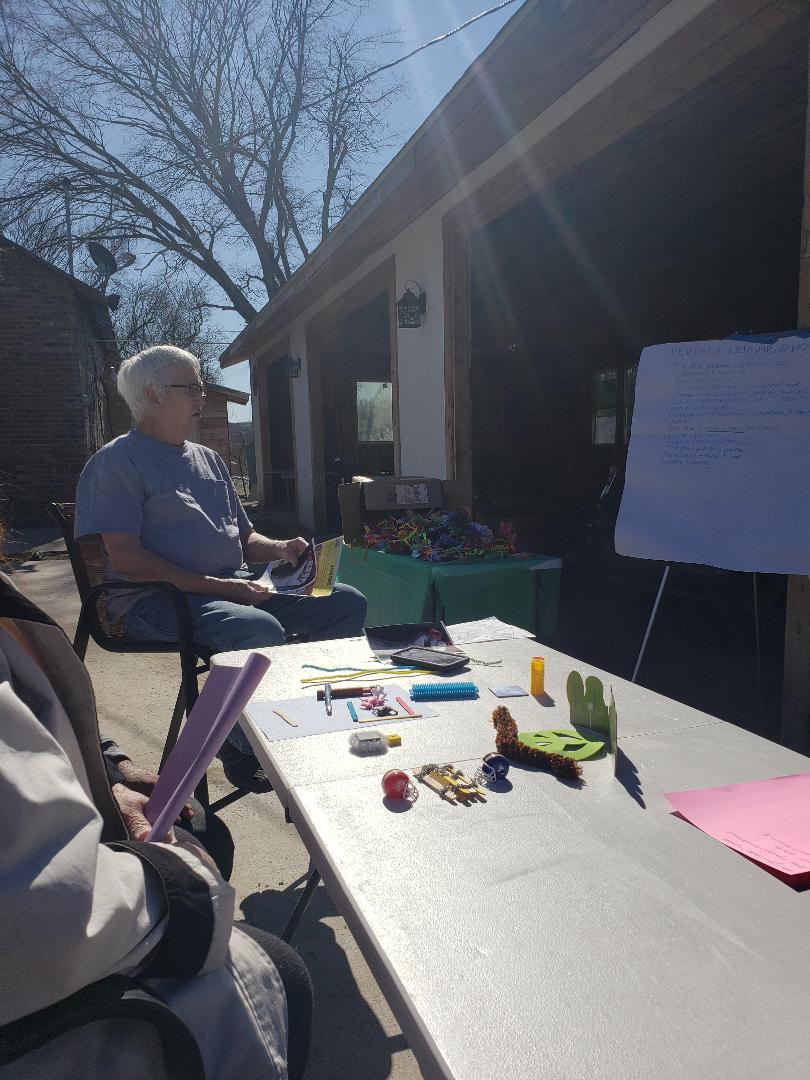 Gathering in an outdoor pavilion only feet away from the notorious Shingle Mountain, the illegal dump’s neighbors recently began to hammer together a very different future for what they want their community to look like.
Gathering in an outdoor pavilion only feet away from the notorious Shingle Mountain, the illegal dump’s neighbors recently began to hammer together a very different future for what they want their community to look like.
Using Legos, pipe cleaners, and construction paper Neighbors United members built a 3-D version of their new vision as part of the first wave of meetings in preparation for the upcoming “forwardDallas!” land use planning process.
Facilitated by The Inclusive Communities Project’s Jennifer Rangel and Downiwnders’ Chair Evelyn Mayo, the group was following up on its successful petition for “Authorized Hearings” to trigger a reexamination of how every tract in their part of the “South Central Corridor” should be zoned. That petition is now winding its way through City Hall and the group’s recommendations will be critical in getting things changed.
Even as they continue to fight for a full-clean-up the residents are doing their best to make sure their neighborhood isn’t victimized again by unscrupulous grifters like Shingle Mountain’s Ganter brothers or the City of Dallas’ own neglect. Their taking their fate into their own hands, in this case, one Lego block at at time.
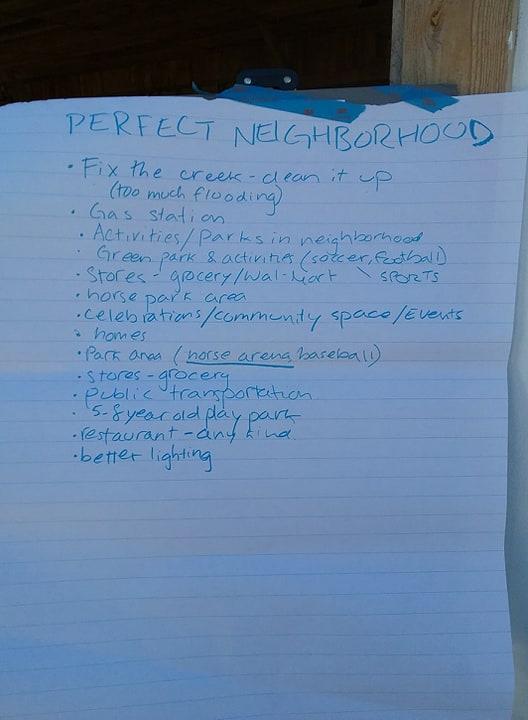
Last undertaken in 2009, “forwardDallas!” is a attempt to write a comprehensive plan for the entire city, block by block, that’s then (theoretically) referenced by residents, developers and City Hall planners in all future decisions. This time, there’s a grassroots campaign gearing up on behalf of environmental justice concerns in Southern Dallas using it to follow-through on previous promises to de-industrialize neighborhoods like Joppa and the South Central Corridors that are next door to the Great Trinity Forest but still dominated by heavy industry.
Obsolete racist zoning forces People of Color to live way too close to heavy industry polluters along the Trinity River floodplain. Success will mean undoing this kind of zoning in big chunks, improving public health and the chances of economic development in the process.
Important goals are restoring residency rights so everyone gets public notices, “down-zoning” tracts that aren’t being used by heavy industry now but could host them in the future, and pro-active pollution control measures new zoning could provide.
Zoning and land use decisions are a large reason why studies consistently show People of Color are exposed to more and higher levels of Particulate Matter air pollution than their white peers. Instead of continuing to battle Southern Dallas polluters permit by permit, zoning reform offers a way for residents to solve the underlying institutional problem. And because the “forwardDallas” review turbocharges the entire process, it offers the opportunity to make large gains faster.
Although the official start to “forwardDallas” isn’t scheduled until April now, Jennifer and Evelyn are getting a head-start so neighborhoods show up at the City meetings with something already in hand. If you’re interested in your neighborhood hosting one of their workshops, please contact us at: downwindersatrisk@gmail.com.
How the Dallas Climate Plan Baits and Switches on Air Pollution

A little after 5 pm Monday February 3rd, the Office of Environmental Quality and Sustainability (OEQS) at Dallas City Hall released its draft recommendations for the city’s climate “action” plan. There are 93 “action items” including transportation, buildings, green spaces, water management, solid waste, and urban agriculture. Most are without imagination or timelines, meaning that even the most milk toast-like recommendations being made will have to be fought for tooth and nail to be done in a timely manner.
Like the department that generated them, the list of recommendations is effusive about stormwater management and tree-planting and silent on more challenging issues such as inequitable pollution burdens and the City’s own reliance on natural gas. It once again puts the spotlight on the lack of any environmental health expertise at Dallas City Hall in the decision-making process. When Dallas OEQS staff talk about the environment, what they really mean is “conservation” – a definition that’s been obsolete since at least the 1970’s.
There’s no better example of how this tunnel vision affects policy than OEQS staff invoking DFW’s chronically poor air quality (i.e. an environmental health problem) to sell the need for its Climate Plan…only to see the actual Plan ignore poor air quality as a serious health issue that could use some innovative thinking.
For over a year now, anytime you saw a Climate Plan presentation by Dallas OEQS staff, it always cited DFW’s smog problem as something that would only get worse as the climate crisis played out. “Everyone here is probably aware of DFW’s longtime air quality problems” or some approximate was the standard riff. And of course, everybody was. Heads nodded. Audience members were sometimes asked if they knew anyone with asthma and hands immediately shot up. That was the point. The selling point.
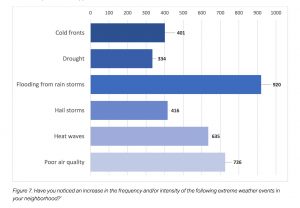 Because, until recently at least, the abstract nature of “the climate crisis” made it difficult to get people excited about the idea of a plan. Staff/Consultants needed a hook. And that hook was something everyone could relate to and probably already knew about: DFW’s three decades of violating the Clean Air Act. If you look at the results of the Ctiy’s online survey asking about frequency or intensity of climate change effects, “Poor Air Quality” was the second most cited concern. Among the City’s own handpicked crew of “stakeholders” advisors, it tied for first, along with buildings/energy use, getting more votes than parks, “nature-based approaches,” and renewable energy.
Because, until recently at least, the abstract nature of “the climate crisis” made it difficult to get people excited about the idea of a plan. Staff/Consultants needed a hook. And that hook was something everyone could relate to and probably already knew about: DFW’s three decades of violating the Clean Air Act. If you look at the results of the Ctiy’s online survey asking about frequency or intensity of climate change effects, “Poor Air Quality” was the second most cited concern. Among the City’s own handpicked crew of “stakeholders” advisors, it tied for first, along with buildings/energy use, getting more votes than parks, “nature-based approaches,” and renewable energy.
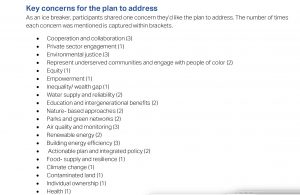
And yet, in those same City Staff presentations that highlighted poor air quality as a reason to have a Climate Plan, air quality itself was completely absent in the staff’s list of anticipated recommendations. It wasn’t that they just didn’t have much to say. They had nothing to say. There wasn’t even a category for air quality.
So Downwinders complained. Loudly. Staff and consultants sprang into action and came up with a category of recommendations officially called…“Other,” the theme of which was “air quality standards” and “public education.” Opportunities cited included “location-specific initiatives (e.g. downtown)” and “Programs targeted outdoor workers (e.g. Landscapers, construction workers).”
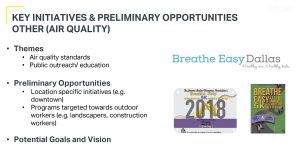 So sure, we have a chronic air pollution problem that warrants a $500,000 consultancy fee to construct a plan, but in that plan we’re only going to continue to inform people of that problem and maybe do some kind of vague thing relating to the poor souls who work outside (limit hours, hand-out free oxygen, help find new employment, or maybe free health check-ups? Doesn’t give a hint). By the way, only the public education part of that slide made it to last Monday. Construction workers and landscapers are still up a creek.
So sure, we have a chronic air pollution problem that warrants a $500,000 consultancy fee to construct a plan, but in that plan we’re only going to continue to inform people of that problem and maybe do some kind of vague thing relating to the poor souls who work outside (limit hours, hand-out free oxygen, help find new employment, or maybe free health check-ups? Doesn’t give a hint). By the way, only the public education part of that slide made it to last Monday. Construction workers and landscapers are still up a creek.
Along with those snippets of text on the “Other” slide were large color pictures of the “Breathe Easy” 5K run sponsored by The Jerome Alston Memorial Foundation in May…during Ozone Season. We’ll give the City staff credit. In terms of public education, there might not be a better way to personalize the seriousness of DFW’s air pollution problem than having North Texas smog cause an emergency asthma attack while you’re running in it. But liability could be an issue.
As late as the final round of public meetings last Fall, staff still didn’t have an “Air Quality” category but said they would have “something” when the plan was published.
Turns out “something” looks a lot like nothing.
Among the 93 “actions” listed in the Plan’s draft, the category of Solid Waste gets nine recommendations. Water Resources 15. Urban Ag 14. The brand new category of “Air Quality” has four – the fewest of any category in the plan. It’s practically stamping “Last-Minute Desperation” on the whole subject.
And tell us if any of these recommendations sound like anything you might have already heard about…
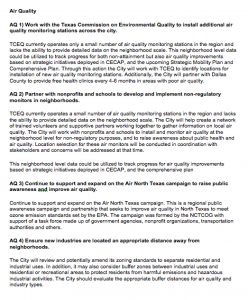
Let’s take them from the top.
The very first thing out of the gate, the lead-off, sexiest, out-of-the-box recommendation for improving air quality is…. somehow talk the State into adding more obsolete, state-run air monitors at some unspecified time in the future.
If you can, forget that the State environmental agency – the Texas Commission on Environmental Quality (TCEQ) – is a model for the Trump Administration. Forget that its official position is that smog is waaaaay overrated as a health threat. In other words, forget that this is akin to hiring Charlie Sheen to babysit your only child.
It’s not the baked-in, in-your-face cynicism of City staff knowing the state has every reason not to do this that’s so offensive. It’s the same cynicism applied to knowing full well what will happen even if the state says yes to the request: no real improvement in local information about air quality. Those state monitors are big, slow, and sparse. They run two hours or more behind real time. They’re hard to find online. They’re needlessly expensive and take up lots of real estate that has to be purchased. Their placement is decided by TCEQ and city staff, not the communities most in need of them. There is no stated OEQS goal for the number of monitors to acquire, or suggestions about where new monitors should be. No language in the recommendation about wanting real time monitoring or more modern equipment. It’s just an expansion of an already-obsolete system the state only runs because federal law requires them to (for now).
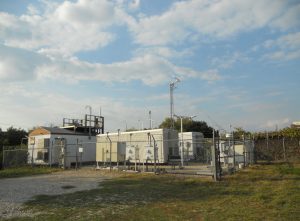
OEQS wants more of these lumbering and obsolete monitors from the state.
So let’s say the City talks the state into doubling the number of state PM 2.5 monitors in Dallas. Victory! The discussion will then be where to place the second slow, hard-to-find PM monitor for all of Dallas County’s 2.5 million residents.
Left unsaid in this recommendation is something we already know. For a year now Staff has tried to move that single Dallas County PM monitor located on Hinton Street north of Downtown to somewhere in Southern Dallas. Apparently the state has made that hard-to-impossible and so for the purposes of having something, anything, to recommend for this climate plan, staff recommends more monitors – knowing there’s a snowball chance in Hell of getting them. It’s the perfect bureaucratic out.
Most importantly the City remains a spectator to the reporting to its residents of how bad their air is. Its staff doesn’t have to make any environmental health judgments as they’re busy promoting tree planting. They leave that up to the people who couldn’t care less about how much pollution you’re breathing.
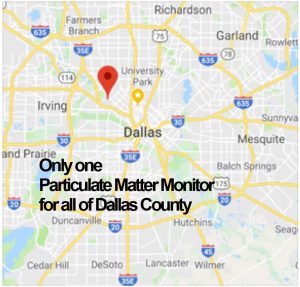
In the wake of recent Gulf Coast chemical plant accidents, the TCEQ is under heavy criticism for its lack of current air monitoring technology. The system it operates in DFW hasn’t changed in over 20 years. TCEQ won’t even put an air monitor in the only DFW “non-attainment” county that doesn’t have one – Wise – where smog levels have been predicted to be even higher than in DFW proper.
Recommending a modest expansion of circa-1999 technology is the opposite of a “best practices” answer for our gap in local air quality knowledge. The most alarming thing about this recommendation is that it got made at all.
The one-liner stapled at the end about offering free health screenings “with Dallas County” (who’s already in the business) in “areas with poor air quality” is incredibly condescending. Here’s the ultimate “settlement house” approach to a social ill – addressing the symptoms but not the cause. “Well, we can’t do much to enforce code or keep those batch plants out of your backyard, but by God we’ll be around every 6 months to keep track of your asthma until you die from it.”
How does OEQS staff know where those “areas with poor air quality” are now unless they’re out monitoring them? Which they clearly do not want to do. Given there’s only one official PM monitor for all of Dallas County, how are they defining “areas with bad air?” If they’re making educated guesses where those “areas” are based on other factors besides monitoring, why not name those factors and the “areas?” OEQS goes out of its way to avoid using the words “environmental justice” even as it makes recommendations based on the concept.
Recommendation #2 – let’s build our own “non-regulatory” air monitoring network sometime in the unspecified future with unspecified non-profits and community partner volunteers and put an unspecified number of monitors in unspecified places, for which we unspecified criteria. And these monitors “could be used to “to track progress for air quality improvements based on strategic initiatives deployed in CECAP, and the comprehensive plan.”
This is actually a great idea. It’s such a great idea that a specified alliance of local governments, non-profits, and community partners are already doing it in specified locations with specified monitors. Their effort is about to deploy over 100 locally-built air monitors that will increase PM 2.5 monitoring in Dallas County by 4000%. It’s called the SharedAirDFW Community Air Quality Monitoring Network and the City of Dallas officially walked out of it last year over a public participation requirement and a desire to refrain from being the source of bad news about bad air.
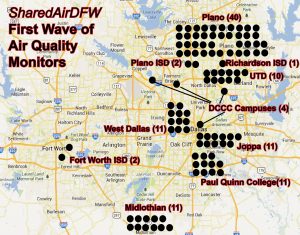
Dallas city staff is consistent in believing that telling you about air pollution is absolutely, positively necessary – they just want someone else to do it.
Having walked away from the SharedAirDFW network, OEQS set out to make one up of its own using the City Hall-friendly Nature Conservancy as its non-profit partner. The “Breath Easy” plan was to put 9-12 PM and smog monitors on the same number of DISD campuses, grow trees and implement anti-idling zones at those schools and see if asthma attacks/rates dropped in 24 months (2 growing cycles). Everyone seemed to agree how important a project this was and the city raised $500,000 or more to buy 12 very nice Aeroqual (Recommended by Downwinders since 2017!) air monitors. Everyone but the Dallas independent School District, who nixed the idea last summer. This detail somehow escaped the presentation staff gave to the City Council’s Quality of Life Committee on the Breath Easy project in September 2018.
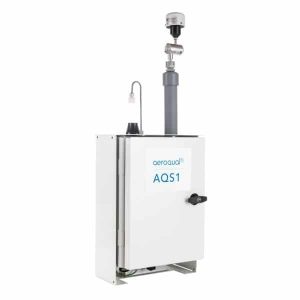
An Aeroqual stationary air monitor like the 12 Dallas owns…but isn’t using
So far the City of Dallas is 0 for 2 in making their own recommendation a reality when it had the chance. But wait! Remember those 12 monitors the City bought for the defunct Breathe Easy project? They’re just sitting somewhere. They’re already paid for but aren’t being used. OEQS could implement this recommendation of theirs on its own tomorrow if it wanted to by placing these 12 monitors in locations based on where the most industrial facilities are and where the most air pollution complaints come from. Overnight it could have its own fleet of “non-regulatory” monitors in the field, with all the benefits cited by staff.
But there’s no mention of those 12 monitors, or of the City Hall’s ability to accomplish this goal on its own, right now, without waiting. Because it doesn’t want to. It wants someone else to do it.
Recommendation #3 . It’s that forlorn public awareness recommendation showing up in the form of continued support for an ozone season air quality campaign run by a group that did its part to make smog an issue for years. There’s no harm to this but there’s also no help. This campaign will go on for as long as DFW is in violation of the Clean Air Act and doesn’t mention climate change.
Finally, there’s recommendation #4. Perhaps (but perhaps not) heavy industry that pollutes a lot shouldn’t be close to homes. This is coming straight-faced from a OEQS that’s approved the last four batch plants seeking permits to set-up shop in Joppa and the South Central Corridor…next to homes. Do as we recommend, not as we actually, you know, do.
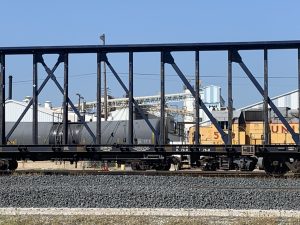
The TAMKO asphalt shingles plant and multiple diesel locomotives operate next to Austin’s asphalt batch plant…and residents in Joppa
When it says the City will review zoning, that’s not a special environmental health screening of sites. It’s just part of upcoming land use planning processes that will already be used to re-examine all zoning on a neighborhood-by-neighborhood level. They’re riding coat tails. The OEQS doesn’t make recommendations about suggested buffer zones, where those zones should be, or what criteria the city should use in pursuing buffer zones. And it doesn’t even say the City’s neighborhoods need any buffer zones between homes and industries at all, just that it may want to consider them at an unspecified time by an unspecified body for unspecified neighborhoods. Have we mentioned the staff at City Hall really really doesn’t like to deal with environmental health issues?
We get it. They had to have something or you’d be reading our criticism about the absence of ANY specific air quality recommendations, no matter how lame. And there are other items in other categories that will inevitably produce decreases in air pollution of all kinds – bus and vehicle fleet electrification being among the lowest-hanging fruit.
But City Hall’s cynical use of DFW’s air pollution problem to win support for a plan that ends up doing nothing about it directly makes these “Air Quality” recommendations particularly contemptuous.
What would more sincere “air quality” recommendations look like?
1. Acknowledging an historic imbalance in the air pollution burdens borne by Dallas neighborhoods and a commitment with a deadline to inventory the City’s air pollution threats by council district and zip code. You c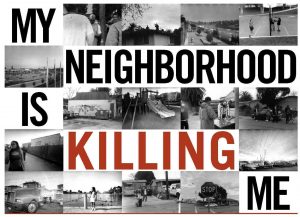 an’t fix what you don’t measure. Right now there’s no map of where concentrations of air pollution are in Dallas.
an’t fix what you don’t measure. Right now there’s no map of where concentrations of air pollution are in Dallas.
2. Acknowledging there’s no safe level of PM air pollution, i.e., no amount of exposure that isn’t capable of doing harm. Acknowledging People of Color are exposed to more, and higher levels of PM pollution than their white peers. These conclusions, supported by a multitude of good studies, including ones from EPA, are basic in prioritizing where to reduce air pollution in Dallas.
3. Recommendation to write an Environmental Equity Provision into City Code to discourage and prohibit siting new polluters in those zip codes hosting more permitted polluters than the citywide average, beginning in 2021.
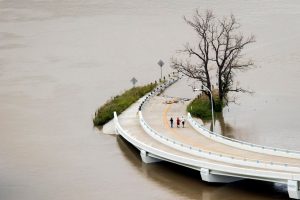 4. Recommendation to quit siting polluters in any floodplain beginning in 2021.
4. Recommendation to quit siting polluters in any floodplain beginning in 2021.
5. Recommend a 2025 deadline for the electrification of all railroad switch yard operations in Dallas.
6. Recommend 1500 foot buffer zones on either side of new major highways where homes, day care centers, and schools would be prohibited from locating. Applied to existing highways as uses within 1000 feet come up for new permits and zoning.

7. Recommend the immediate amortization and relocation of the GAF asphalt shingle factory in West Dallas and the TAMKO shingle factory in Joppa. These factories are among the City’s largest industrial polluters in Dallas, accounting for over 420 tons of air pollution in 2017 alone. They operate in the middle of dense urban residential areas populated primarily by People of Color. They need to be relocated elsewhere. Building new facilities will automatically trigger modern pollution controls requirements. They’ll be cleaner and doing business in a less harmful location.
8. Recommendation to rewrite city codes giving incentives for cleaner industries and more requirements for dirty ones.
9. Join UTD’s SharedAirDFW Community Air Monitoring Network – plug OEQS’ 12 unused monitors into the Network and begin to take responsibility for telling Dallas residents what their air quality actually is.
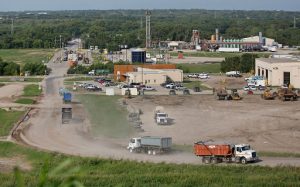 10. Acknowledge the conflict of interest the City has in producing and selling gas from its landfill recovery operation and commit to electrification of all city-owned vehicles by 2025. Dallas’ own city-run McCommas Bluff methane gas recovery facility is the fourth largest air polluter in Dallas, releasing over 160 tons of air pollution in 2017 alone. Recommend contracting only with electric vehicle fleets for additional services. Los Angeles recently committed to an all electric garbage truck fleet in five years, and Dallas could do the same – but it still wants to use its own landfill gas to power combustion vehicles.
10. Acknowledge the conflict of interest the City has in producing and selling gas from its landfill recovery operation and commit to electrification of all city-owned vehicles by 2025. Dallas’ own city-run McCommas Bluff methane gas recovery facility is the fourth largest air polluter in Dallas, releasing over 160 tons of air pollution in 2017 alone. Recommend contracting only with electric vehicle fleets for additional services. Los Angeles recently committed to an all electric garbage truck fleet in five years, and Dallas could do the same – but it still wants to use its own landfill gas to power combustion vehicles.
11. Implement stronger enforcement of the city air quality and nuisance ordinances, including hiring new staff and publicizing how to request an investigation.
12. Beginning in 2025 begin collecting municipal clean air mitigation fees of $50 a pound on permitted air pollution from major sources to incentivize pollution controls and pay for new staff. In 2017 such a fee would have collected over $1 million.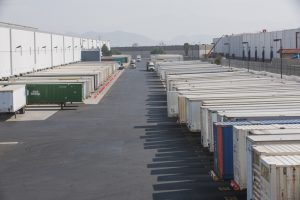
13. Implement no idling zones in all Dallas warehouse districts.
14. Recommend Low-Emission Zones in Downtown Dallas where combustion vehicles are banned or restricted, permanently or on a schedule. Consider expanding to other parts of Dallas such as Deep Ellum and Bishop Arts where congestion is already a problem.
15. Recommend PM pollution protection be designed into new bus shelters.
16. Recommend establishment of an Electric Bus Procurement Pool with DISD, DART, Trinity Metro, other area schools districts, and transit companies for cheaper purchases of electric buses.
17. Restoration of t he Dallas Environmental Health Commission.
he Dallas Environmental Health Commission.
18. Hiring a City of Dallas Environmental Health Scientist.
DFW does have a chronic bad air problem. The Climate Crisis will make it worse. It is a legitimate area of policy planning in any thoughtful, modern Climate Plan.
Just not this one.
